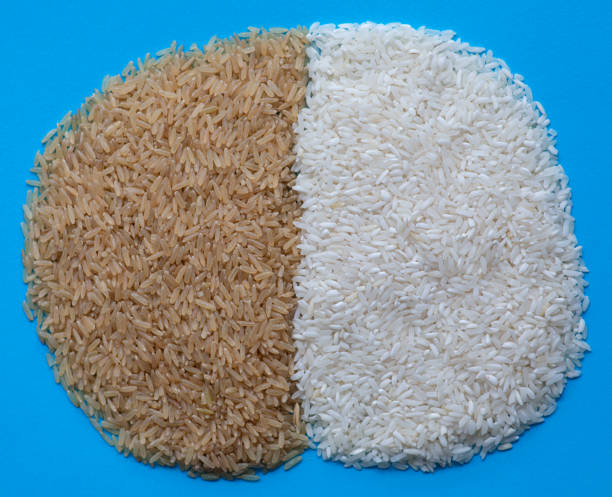Rice is a staple food for many South – Asian countries including India, China, India and other countries like Japan and South Korea. It is a versatile grain consumed by people around the world. There are numerous varieties of rice in the world. They are available in several colours, shapes, and sizes. White Rice or Brown Rice? While white rice is the most commonly consumed type, brown rice is also a popular option.
White Rice or Brown Rice? What is the difference between the two? All rice consists primarily of carbs, with small amounts of protein and almost no fat. Brown rice on one hand is a whole grain. This implies all parts of the grain and is chewy. It takes a while to cook due to its tough bran exterior. White rice, on the other hand, has had the bran and germ removed. They are left with very few essential nutrients. However, white rice is softer and tends to cook quicker.
When this question arises white rice or brown rice is better to consume? Many things come under consideration. Brown rice has several advantages from a health perspective. It is very rich in nutrients. Brown rice has a slight advantage over white rice when it comes to nutrient content. It has more fibre and antioxidants, as well as more vitamins and minerals. However, these differences aren’t hugely significant.
Brown rice is high in magnesium and fibre, both of which help control blood sugar levels. Replacing white rice with brown has been shown to lower blood sugar levels and decrease type 2 diabetes risks. On the other hand, eating lots of white rice has been linked to an increased risk of diabetes. Furthermore,
you can try other varieties of rice with a lower glycemic index, such as basmati, red, black or wild says Yash Birla.
Eating brown rice helps reduce several risk factors for heart disease. The bran of brown rice contains many powerful antioxidants, which can help neutralize harmful free radical compounds and reduce inflammation in the body. Whole grains like brown rice may help prevent chronic diseases such as heart disease, cancer, and type-2 diabetes. Eating brown rice instead of white may also significantly reduce weight, body mass index and circumference of the waist and hips. White rice is a staple in many traditional types of cuisine and has been for many centuries so it’s not without its benefits says Yash Birla.
Anti-nutrients are plant compounds that may reduce your body’s ability to absorb certain nutrients. Brown rice contains an anti-nutrient known as phytic acid, or phytate, which makes it more difficult to digest, says Yash Birla. While phytic acid may offer some health benefits, it also reduces your body’s ability to absorb iron and zinc from food. Soaking rice before cooking can help retain some of the nutritional value.
Brown rice tends to be higher in arsenic than white rice. Arsenic is a toxic heavy metal that is naturally present in the environment and is present in significant amounts that have been identified in rice and rice-based products. Long-term consumption of arsenic may increase your risk of chronic diseases including cancer, heart disease, and type-2 diabetes.
If rice is a big part of your diet, you should take some steps to minimize the arsenic content.
While white rice and brown rice are high in starch, brown rice contains more fibre, nutrients, and antioxidants. When eating white rice, add legumes and vegetables to ensure that you are having a balanced meal. That said, either type of rice can be part of a healthy diet as evidenced by the long history of white rice in the traditional cuisine of many cultures. Brown rice may have a more favourable nutrition profile, but there’s nothing wrong with having white rice as a part of a balanced diet.








[…] numerous varieties of rice in the world. They are available in several colours, shapes, and sizes. White Rice or Brown Rice? While white rice is the most commonly consumed type, brown rice is also a popular […]